Makes space in beekeeping (3)
The poor cryptic crossword clue in the title of course refers to an eke.
In beEKEeping, an eke is a wooden frame, the same dimensions as the hive, used to provide temporary additional volume to the hive.
They are useful and versatile pieces of equipment.
Etymology
The word eke can be traced back to Middle English (eke or eake) when it meant “an addition” and was derived from the the Old English (ēaca) and the Old Norse (auki) words of the same meaning.
In Old English it usually referred to a reinforcement of troops, but in 1549 it was first used {{1}} to indicate an addition to the tag end of a bell-rope.
And then, a mere 308 years later it was used to describe a cylinder on which a beehive was placed to increase its capacity.
‘Cylinder’ of course, because in 1857 most beehives were probably still straw skeps {{2}}. A more extensive definition from the same period was a small addition to the bottom of a beehive, often just a few strands of straw, on which the hive was temporarily raised.
Most of us don’t use skeps any longer (other than for swarm collection) but we do use ekes.
Don’t buy it, build it
For some time I’ve reckoned that the appropriately-named dummy board represent the single item with the largest profit margin for manufacturers of beekeeping equipment.
I’m wrong. It’s the humble and unassuming, but oh so useful, eke.
At its most simple, an eke is a made of four bits of wood, screwed, nailed or glued together at the corners, square {{3}} and true. It doesn’t need to be made out of the best quality cedar.
In fact, it doesn’t need to be made of cedar at all. Any readily-available softwood with a couple of coats of wood-preservative slapped on top will be just fine.
Look back at the definition of an eke. Now, as in 1857, it was meant as a temporary addition to the hive. Cuprinol is just fine, best western cedar is overkill.

No … rabbet. R a b b E t.
I shall leave the precise design and details of building an eke as ‘an exercise for the reader’. You can achieve ‘square and true’ by using a simple square of plywood as a template. I’d suggest gluing and screwing the corners using a simple rabbet joint. Paint the entire thing with a couple of coats of bee-friendly wood preservative and you’ll have saved at least £20 on the prices some of the commercial suppliers charge.
Dimensions
Length and width are the same as the hive, depth is the important one.
You can make an eke any depth you want. You can usually buy them in only two depths.
- Shallow (~20mm) – to provide just enough space over the brood frames when applying Apiguard treatment in the autumn. I can’t think of alternative uses that need an eke this shallow.
- Deep (~90mm) – to convert a regular brood box for use with 14 x 12 frames {{4}}.
All my ekes are made from 20 x 44mm (thickness x depth {{5}}) softwood. This just happened to be the wood I could easily get when I first started building them, but has turned out to be a very useful depth overall.
Build more than one. Unless you only have one hive. In which case buy another hive and then build another eke. I’ve got about two-thirds the number of ekes as I have hives and I regularly run out.
Feeding and treating
The most frequent use for an eke is to provide space above the frames and below the crownboard, for example when feeding a colony fondant or applying Apiguard. It takes just seconds to lift the roof and crownboard, position the eke, add the fondant or tray of Apiguard and cover the hive again. In the days when I used to use Apiguard I’d often add the fondant at the same time {{6}}. What could be simpler?
With care (or a lot of flattening the block by standing on it repeatedly) it’s possible to easily squeeze 6-8kg of fondant into the void provided by a 43mm eke. Since I usually feed a full 12.5kg block of fondant in one go – sliced in half and opened up like a book – I simply pop an eke under an inverted insulated crownboard to provide the ‘headroom’ needed.
Whilst we’re on the subject of applying miticides … I also use ekes when administering vaporised oxalic acid-containing treatments to colonies in polystyrene hives. The nozzle of my Sublimox vaporiser gets hot enough to melt polystyrene. Rather than messing around trying to aim the billowing cloud of vapour through the entrance it’s much easier simply adding a wooden eke to the top of the brood box and pushing the nozzle through a 7mm hole in one side. The vapour easily permeates to every corner of the hive {{7}}.
Travelling
Travel screens are used in place of crownboards and roofs when colonies are being moved any distance. They are usually framed wire mesh of some sort. They are important as they stop colonies overheating during the stress of transporting them. You can also easily spray water onto the colony to help cool it if needed.
They are yet another thing that spends 98% of the time stacked up in a corner with all the other oddities of beekeeping – clearer boards, Miller feeders, weirdo split boards and custom-made shims for uniting mismatched hives.
I don’t bother with travel screens, but instead use robust ‘glassfibre’ insect mesh held securely in place with – you’ve guessed it – an eke. I just lay the mesh over the open colony, add the eke and then strap everything thing up tight. This works a treat. The eke ensures that the mesh is held securely around the edges.
Insulation and crownboards
I’m a firm believer in providing a block insulation over the crownboard, ideally all season, but certainly through the winter. I’ve built a number of reversible, insulated perspex crownboards … but I didn’t build enough
I’ve also bought, inherited or otherwise acquired several standard framed plywood or perspex crownboards. Using a 44mm deep eke and a suitably sized block of 50mm thick expanded foam you can easily cobble together a perfectly function insulated crownboard.
And the rest …
There are all sorts of additional uses for ekes … stacking supers on, providing space under brood frames with protruding queen cells (for example, when moving a frame from one colony to another {{8}}, doubled up to provide depth for 14 x 12 frames etc.
It’s worth keeping a couple of ekes stacked up with spare supers and broods in the apiary. They’re more useful than you’d think a simple square frame of wood should be.
{{1}}: More correctly, first recorded being used which is not the same thing at all.
{{2}}: Langstroth only patented the vertically modular hive with removable frames in 1852.
{{3}}: Please cut me some slack Langstroth users … the majority of the readers of this site probably use National hives. I could have specified ‘rectangular’ as a square is simply a form of rectangle in which the adjacent sides are the same length … but that would have confused National hive users. Beekeeping, a global pastime confounded by incompatible equipment.
{{4}}: In fairness to Thorne’s, who make the eke linked at the start of this sentence (which costs an eye-watering £23.50), this includes frame runners and sits neatly and securely on top of a conventional brood box. It’s more than a temporary addition to the hive. However, for just a couple of pounds more you can buy a 14 x 12 cedar flat-packed brood box … even less temporary and even more secure.
{{5}}: These are the finished dimensions of the planed softwood, which was probably sold as being a little bit larger all round just to confuse amateur DIYers.
{{6}}: For new readers, I’d recommend reading up on when to treat colonies with miticides in the autumn and a previous post on feeding, which explains why I use fondant in the autumn.
{{7}}: This is marginally less convenient as you have to remove the roof and crownboard first, but in midwinter this rarely disturbs the bees and is preferable to melting the poly. A better solution altogether is to use wooden floors, modified with a suitably-sized hole to deliver the vapour.
{{8}}: Yes … I know they should all be the same depth and dimensions, but is your equipment truly that compatible and interchangeable? I know mine isn’t.

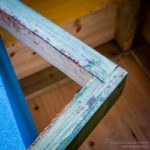
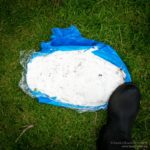
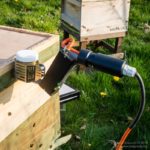
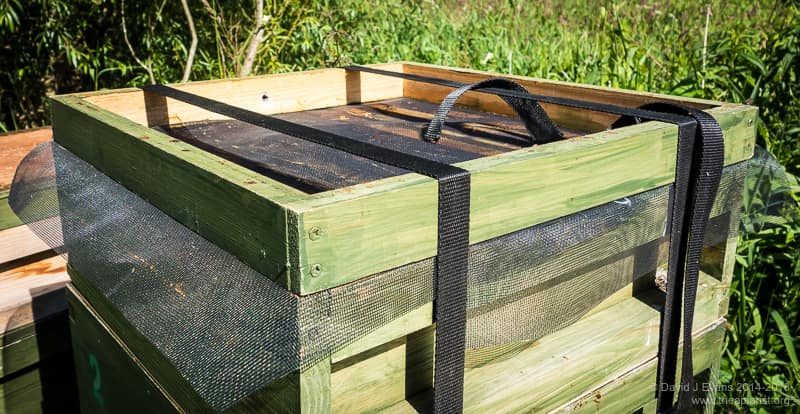
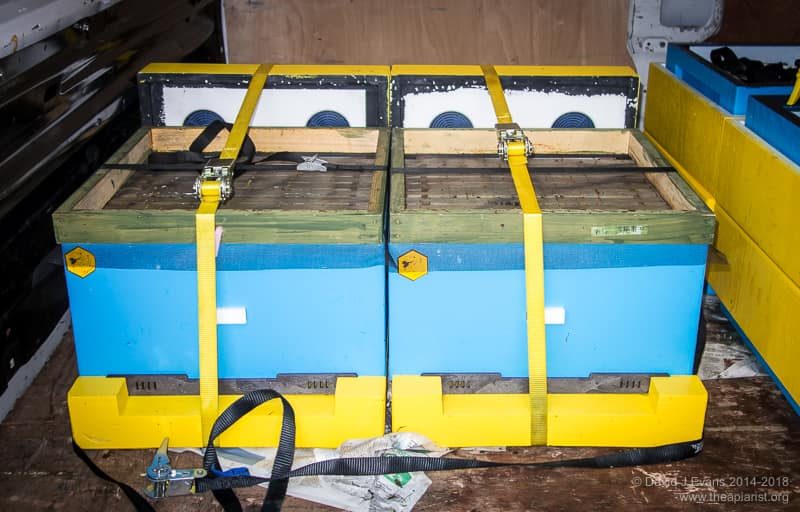
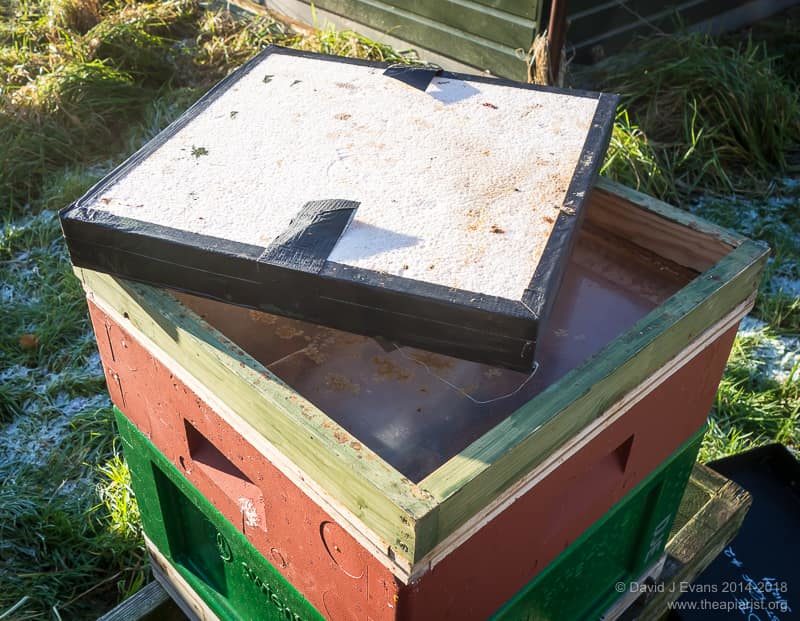
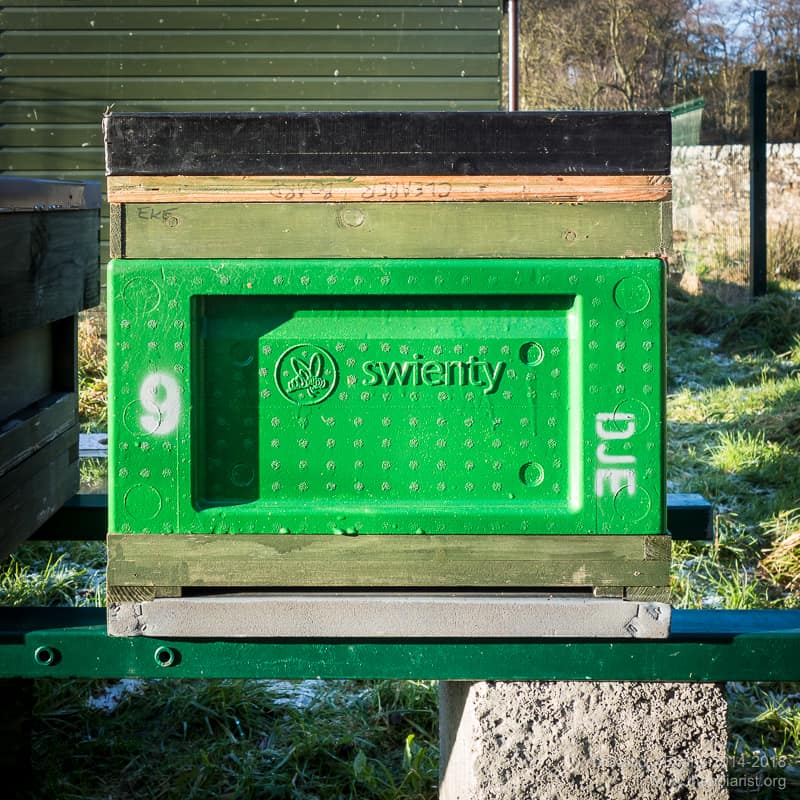
Join the discussion ...